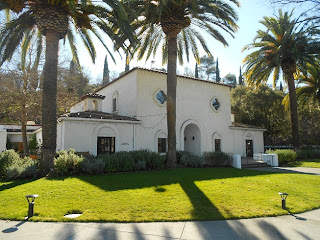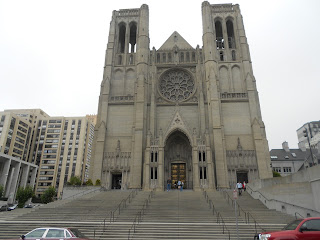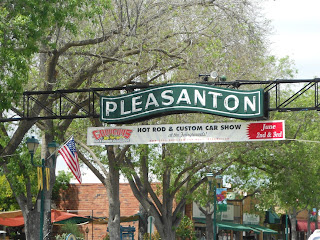Western Trips makes a road trip to one of northern California's popular wine regions, the Livermore Valley.
The beautiful Livermore Valley is located about 45 miles east of San Francisco and about 35 miles east of Oakland California. driving there for a pleasant side trip from the Bay Area is easy. Livermore California is located along Interstate 580.
 |
| Wente Vineyards, Livermore Valley CA |
The types of grapes grown in any region of California has most to do with it's climate and soil. As opposed to Sonoma County grape growing, the Livermore Valley has a warmer climate. The Petite Sirah is one of Livermore's grapes that produces a very popular red wine
The first grapes were planted in the valley during the late 1760's by missionaries. Robert Livermore, of who the city's name is in honor of, planted the first commercial vines in the 1840s and Livermore Valley commercial wine production also commenced back in the 1840's. One of the very first wineries to open in the valley was the Cresta Blanca Winery in 1882. The Livermore Valley came to the attention of the world wine industry when their wines won America's first Gold Medal for Wine at the Paris exposition in 1889.
The Livermore Valley today offers more than forty wineries and over 5,000 acres of vineyards. Tasting rooms showcase award-winning wines and offer year around activities as well. On of the best websites to get an up to date calendar of upcoming events is that of the Livermore Valley Wine Growers Association. Their site is www.lvwine.org.
 |
| Beautiful grounds at Wente Vineyards |
Western Trips visited the famous and hugely popular Wente Vineyards. Of special distinction is that the Wente Vineyard is the oldest continuously operated family-owned vineyard in the country. The vineyard was founded in 1883 by C. H. Wente, a first-generation immigrant from Germany who learned wine making from Charles Krug. Wente recognized the potential for quality grape production in the Livermore Valley which offered warm days and cool nights. Wente's very first vineyard was on forty-eight acres. Today's Wente Vineyards is comprised of about 2,000 acres in the Livermore/san Francisco Bay area and 800 acres outside of Monterey California.
As our photos show, the Wente Vineyards site is spacious and beautiful. Visit the Wente Vineyards tasting room and the award winning restaurant. Wente Vineyards has also been long known as a concert venue. The concerts at Wente Vineyards combine entertainment with one the most unique backdrops found anywhere. A great place to see top name entertainment in a spacious outdoor vineyard setting. This is just one more reason why a day trip to the Livermore Valley as part of your San Francisco Bay trip is a lot of fun.
 |
| Concannon Vineyard Tasting Room |
Concannon Vineyard was founded by James Concannon, an Irish immigrant who traveled to the United States in 1865. By 1874, the James Concannon family had moved from Maine to Oregon and then to the San Francisco Bay area. After much study and consultation with wine experts of the era, Concannon set out to build his vineyard and winery in the Livermore Valley. By accomplishing this, James Concannon became the first Irish immigrant to establish a successful winery in America.
Concannon Vineyard has the distinction of being one of the first wineries in California to make Bordeaux style wines. The first vineyards were planted in 1883. Concannon's first white Bordeaux cuttings were planted in the late 1880's.
Another interesting fact is that the Concannon Vineyard was active producing sacramental wine for the Roman Catholic Church during the prohibition era of the early 1900's.The vineyard has also been registered as a California Historic Landmark.
 |
| 1883 Victorian House |
Another distinctive item you'll see when entering the Concannon Vineyard is the Victorian house which was built in 1883.
Links to two additional Western Trips photo articles you'll enjoy are Downtown Napa California and beautiful St. Helena California.
Visiting the Livermore Valley Wineries
The Livermore Valley is easy to reach from any San Francisco Bay area city. From any Eastbay city you'll want to take Interstate 580 eastbound to the city of Livermore. From Oakland you can get directly on Interstate 580. From San Jose to the south you'll be able to take Interstate 880 northbound and follow the signs to Interstate 680. I 680 which will intersect with I 580 in Dublin. Take the I 580 eastbound exit which will take you to Livermore. Off of Interstate 580 exit Livermore Avenue and go south into the middle of Livermore.
When you put together your San Francisco Bay area trip planner and you're looking for a close in unique and historic wine area to visit, you'll want to add the Livermore Valley wineries to that list.
(Photos from author's collection)






































